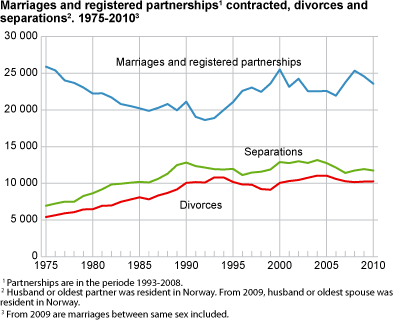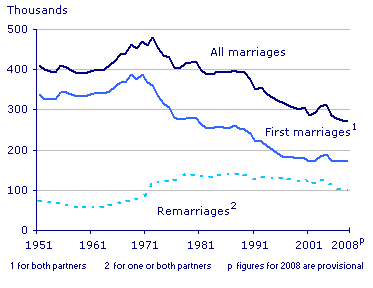Does relationship education cut divorce?
Iain Duncan Smith, the Work and Pensions Secretary, has often cited Norway as an example of how relationship counselling can cut the divorce rate.
The Daily Telegraph, for example, reported on February 7 that Mr Duncan Smith would refer to the Norwegian success once again in a major speech that week. Under the heading “Couples to get free counselling to stop the cost of broken homes”, Rosa Prince, the paper’s political editor, said that divorce rate in Norway had fallen for the last 15 years after the state-sponsored relationship education programme was introduced.
Mr Duncan Smith didn’t actually mention Norway in his speech the next day, but he certainly has in the past. In an interview with the Telegraph at the end of last year he said that couples heading for separation in Norway had to “work through what is going to happen with their children, which has a big effect on their thinking.”
He added: “Too many couples break up without understanding the consequences for their families. We should encourage people to face up to reality and make proper arrangements that ensure the best outcome for their children.” The Telegraph report credited the Norwegian programme, introduced in 1994, with “reversing Norway’s trend for a rising divorce rate and halting the decline in marriage “.
What do the statistics show?
Divorce rates in the UK and Norway are almost identical. The most recent figures for both countries show that in 2009 Norway had a divorce rate of 11.6 per 1,000 married couples, while the figure in the UK was 11.2. Table (below) shows the recent trends in Norwegian divorces.
A longer term view shows that that divorce has stabilised in Norway after a rapid rise in the 1970s and 80s. The trend since 1990 is flat. In the UK, divorces peaked in 1993 and have since fallen by 30 per cent (from 180,523 to 126,496). (Charts 1 and 2. below))
Chart 1

Chart 2
So since the Norwegian programme was introduced, its divorce trend has indeed stabilised. But over the same period, the UK divorce rate has fallen by 30 per cent without any such programme. Last year’s UK figure was the lowest since 1973.
Marriages show a different pattern. Both countries saw a sharp fall in marriage from the early 1970s. But since the mid-90s Norway has reversed the trend while the UK has not. (see Chart 1 above, for Norway and Chart 3, below, for the UK.)
Chart 3

This may be attributable, at least in part, to the relationship education programme. Norway has a high cohabitation rate, and since relationship education explicitly includes cohabiting couples, it may have had some effect on encouraging them to marry when compared to the UK.. But its effect on divorce is less obvious.




Donna Richardson (not verified) wrote,
Sat, 05/03/2011 - 17:39
Shouldn't a site that is dedicated to honesty in the use of statistics be honest enough to give citations for the information it publishes? I'd love to look at the sources of these reports!
Robert Whiston (not verified) wrote,
Wed, 09/03/2011 - 02:56
You're quite right.
Somehow the sources have been deleted from the original.
I will find them for you and post separately.
Robert Whiston (not verified) wrote,
Wed, 09/03/2011 - 03:01
Norwegian Statistical Dept - referred to as SSB - is the source, e.g.
http://www.ssb.no/en/folkber/main.html for births and immigration).
http://www.ssb.no/english/subjects/02/02/30/ekteskap_en/tab-2010-08-26-0....
http://www.ssb.no/ekteskap_en/ for "Fewer marriages."
http://www.ssb.no/skilsmisse_en/arkiv/art-2010-08-26-01-en.html “No change in the number of divorces”